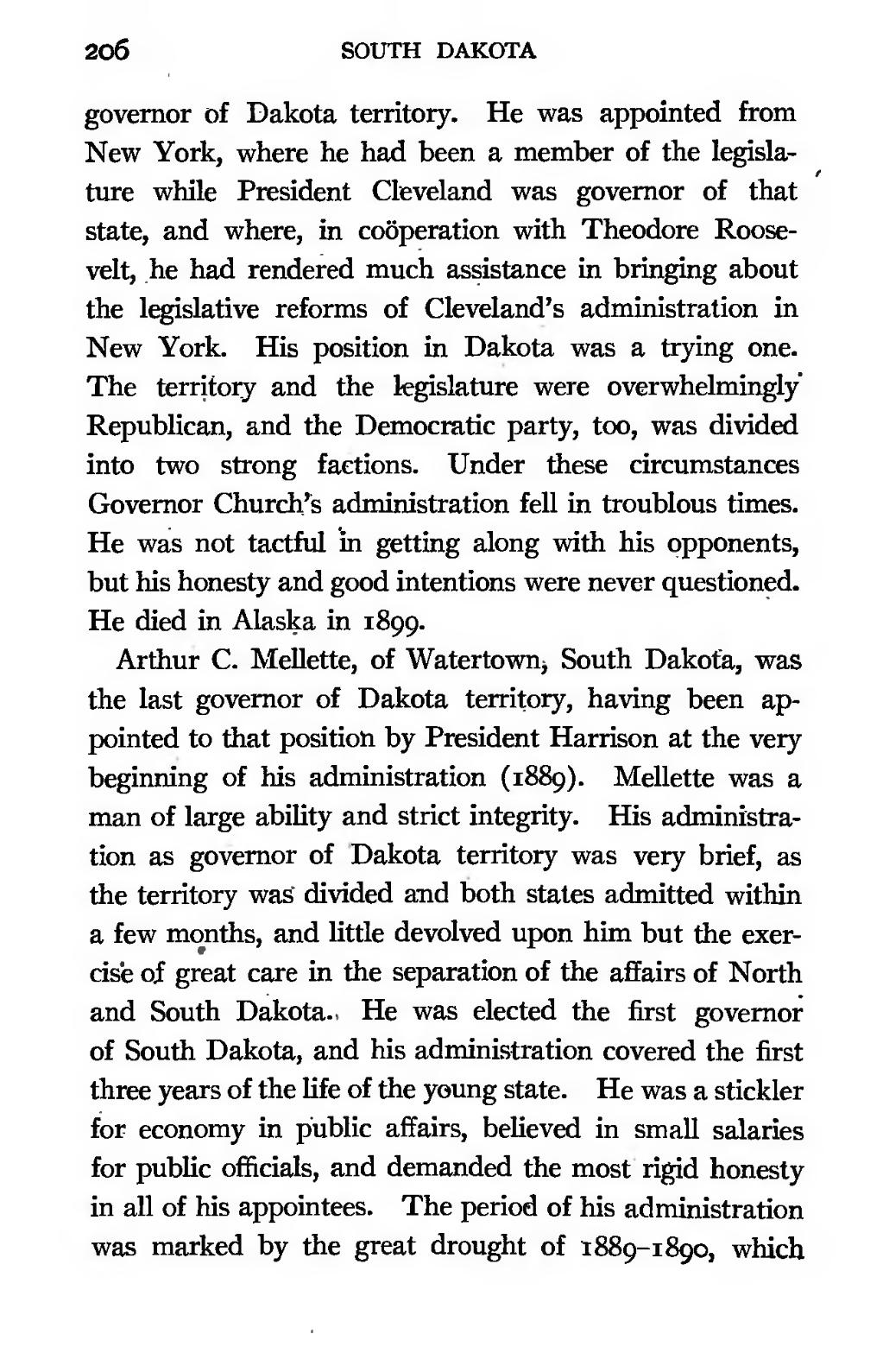governor of Dakota territory. He was appointed from New York, where he had been a member of the legislature while President Cleveland was governor of that state, and where, in coöperation with Theodore Roosevelt, he had rendered much assistance in bringing about the legislative reforms of Cleveland's administration in New York. His position in Dakota was a trying one. The territory and the legislature were overwhelmingly Republican, and the Democratic party, too, was divided into two strong factions. Under these circumstances Governor Church's administration fell in troublous times. He was not tactful in getting along with his opponents, but his honesty and good intentions were never questioned. He died in Alaska in 1899.
Arthur C. Mellette, of Watertown, South Dakota, was the last governor of Dakota territory, having been appointed to that position by President Harrison at the very beginning of his administration (1889). Mellette was a man of large ability and strict integrity. His administration as governor of Dakota territory was very brief, as the territory was divided and both states admitted within a few months, and little devolved upon him but the exercise of great care in the separation of the affairs of North and South Dakota. He was elected the fifth governor of South Dakota, and his administration covered the first three years of the life of the young state. He was a stickler for economy in public affairs, believed in small salaries for public officials, and demanded the most rigid honesty in all of his appointees. The period of his administration was marked by the great drought of 1889-1890, which
